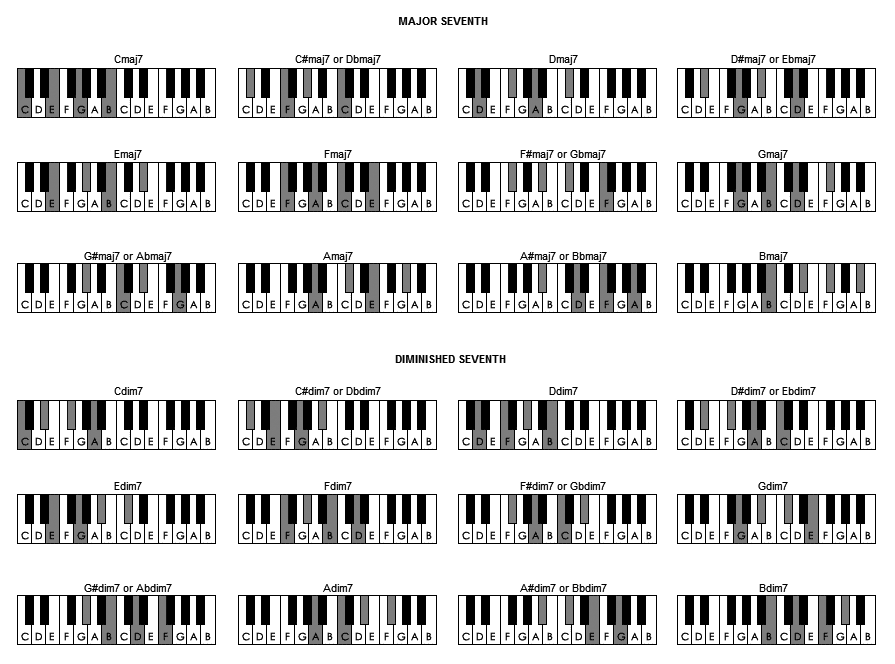

Typically when this is done it is played in the following orientation: C, G-flat, A-flat (from the bottom up). C, E-flat, G-flat, A-flat, or other combinations).Īdditionally, the E-flat of the chord can be left out (A-flat, C, G-flat) and it still function as an A-flat 7. As with any other chord it can be played in any combination and still count as an A-flat 7 chord (i.e. In root position it will have the A-flat on bottom, C as the lower middle, E-flat as the upper middle and G-flat on the top. You’ll most often encounter the half-diminished seventh as the seventh chord built on scale degree two of the minor scale.An A Flat 7 Piano Chord is a four-note chord consisting of the notes A-flat, C, E-flat and G-flat. It’s a tense sonority that’s not often heard in pop music. A diminished triad is built with a minor third and a tritone (diminished fifth/augmented fourth) above the root.Īdd a minor seventh on top and you’ve got a half-diminished seventh chord. If you need a refresher on this basic chord structure, head over to our guide to chord building. The next two seventh chords are based on the diminished triad. The dominant seventh is mostly used in this role, but it can take on the function of a tonic chord as well in blues progressions. You can hear that tension in the dominant seventh as it resolves neatly to the tonic in a musical cadence. The seventh in the dominant seventh chords is the fourth degree of the original C major scale. The seventh is sometimes called the “leading tone” because it wants to resolve up to the tonic. The third of the dominant seventh chord is the seventh degree of the original C major scale. If you listen carefully you’ll hear something special about these two tones. That’s because of the third and seventh of the dominant seventh.


 0 kommentar(er)
0 kommentar(er)
